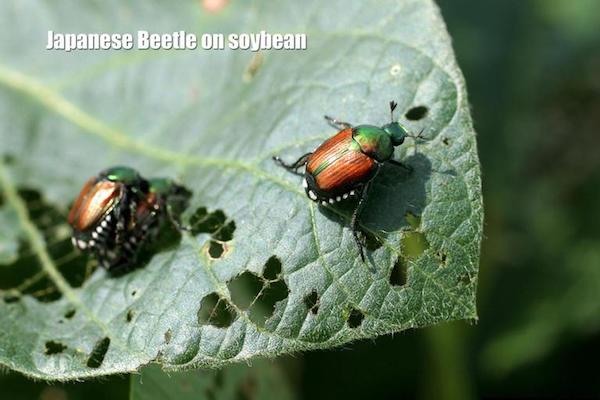 By Bethany Kroeze, AgVenture Marketing Manager
By Bethany Kroeze, AgVenture Marketing Manager
Japanese beetles first arrived in the United States in the early 1900s with a shipment of Japanese iris bulbs to New Jersey and as the years go by, they have spread across the country, infesting fields and gardens as the adults feed on more than 300 species of plants. According to the University of Nebraska-Lincoln, the beetle has now established a range from the east coast to Nebraska, north to Canada and south to Alabama.1
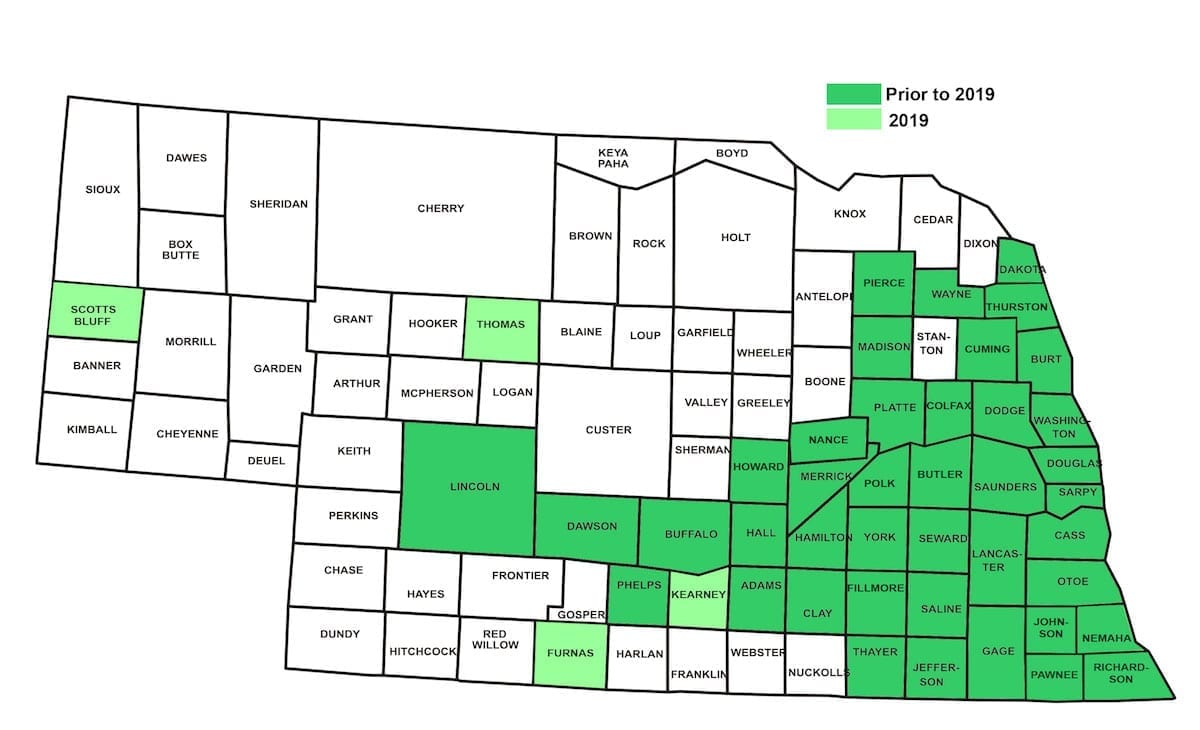 Iowa State University Extension and Outreach Field Agronomists have reported grubs present across the state as of June 11, 2020, and Dr. Erin Hodgson says that the emergence is about seven-to-10 days ahead of the last few years.
Iowa State University Extension and Outreach Field Agronomists have reported grubs present across the state as of June 11, 2020, and Dr. Erin Hodgson says that the emergence is about seven-to-10 days ahead of the last few years.
In Nebraska, Japanese beetles have been identified as far west as Scottsbulff County in 2019 (Figure 2). Emergence across the state of Nebraska is expected over the next few weeks. Japanese beetles have one generation per year and tend to feed in clusters.
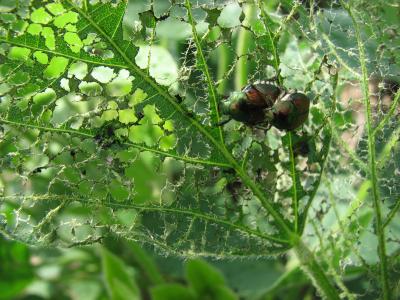 Japanese beetles are pests through their entire lifecycle. As grubs, they feed on roots, generally turfgrasses, and as adults, they feed on plant leaves, including corn and soybean plants. Adult beetles use their sharp mouthparts to eat the green tissue between the veins of leaves, resulting in a lacy or doily-like appearance (Figure 3). Damage to soybeans will be easily visible as the beetles feed primarily in the upper canopy.
Japanese beetles are pests through their entire lifecycle. As grubs, they feed on roots, generally turfgrasses, and as adults, they feed on plant leaves, including corn and soybean plants. Adult beetles use their sharp mouthparts to eat the green tissue between the veins of leaves, resulting in a lacy or doily-like appearance (Figure 3). Damage to soybeans will be easily visible as the beetles feed primarily in the upper canopy.
Insecticide treatment is recommended for soybeans when the insects are present and damage is estimated to exceed 30% defoliation during vegetative stages and 20% in reproductive stages.2 To estimate defoliation in soybeans, follow the chart provided by University of Nebraska-Lincoln Extension (Figure 4).

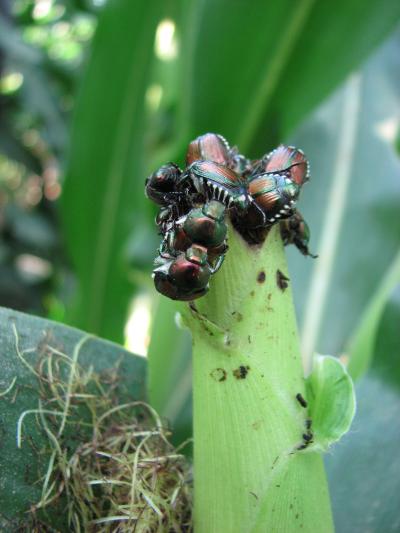
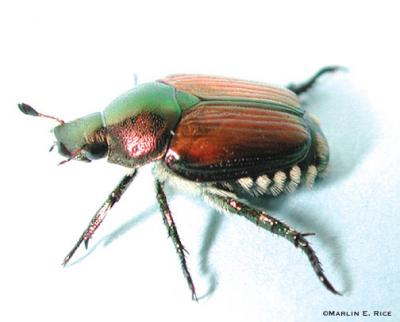
In corn plants, Japanese beetles will cause similar damage to corn rootworm beetles, scraping off green surface tissue from corn leaves prior to silk emergence. The insects prefer silks if they are available, which leads to interference with pollination if the insect population is large enough to severely clip silks prior to pollination.
To effectively control Japanese beetles in corn, the University of Illinois recommends an insecticide treatment during silking if: 1) there are three or more Japanese beetles per ear, 2) silks have been clipped to less than ½ inch, AND 3) pollination is less than 50% complete.
When scouting for Japanese beetles, it is important to recognize the difference between this pest and other lookalikes. Adult beetles are up to 1/2-inch-long with metallic green heads, clubbed antennae and bronze wing covers. Look for a series of white tufts of hair on each side of the abdomen – this is a distinct feature of the Japanese beetle (Figure 6).
Sand chafers (or false Japanese beetles), masked chafers and May and June beetles are present as far west as Iowa and Nebraska. Sand chafers are commonly found along the Platte River valley in Nebraska and are known to feed on the flowers, foliage and fruit of many plants, but are not typically considered field crop pests. Masked chafers are common in Iowa and are similar in size to the Japanese beetle but have a dark yellow or tan colored body with dark markings on the head. This insect is not known to feed on plants. Also common in Iowa, May and June beetle adults are one-inch in length with a chestnut brown to red body color. This pest commonly feeds on tree foliage but is not considered a field crop pest.3
For assistance identifying Japanese beetles in your corn and soybean fields, contact your AgVenture Yield Specialist.
- Figure 1. Japanese beetles on soybean plant. Photo by Roger Schmidt, University of Wisconsin-Madison, Bugwood.org.
- Figure 2. Distribution of Japanese beetles in Nebraska, based on Nebraska Department of Agriculture survey data.
- Figure 3. Japanese beetles and injury to soybean. Photo by Mark Licht.
- Figure 4. Process for sampling soybean leaves to assess defoliation. Figure by Justin McMechan, Crop Protection and Cropping Systems Specialist, University of Nebraska-Lincoln.
- Figure 5. Japanese beetles often aggregate and feed on corn silks. Photo Mark Licht.
- Figure 6. Adult Japanese beetle. Photo by Marlin E. Rice.
1 Larson, Jonathan. Extension Educator – Entomology. University of Nebraska-Lincoln.
2 Wright, Robert; Justin McMechan; Kyle Koch. University of Nebraska-Lincoln. June 23, 2020.
3 Rice, Marlin E. and Erin Hodgson. Iowa State University Extension and Outreach. Updated 2017.